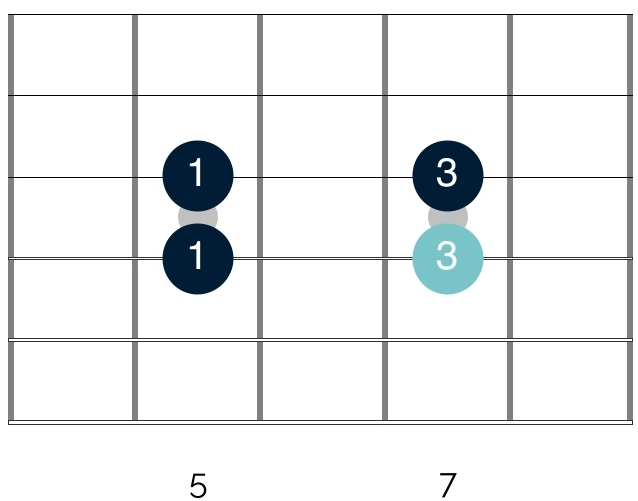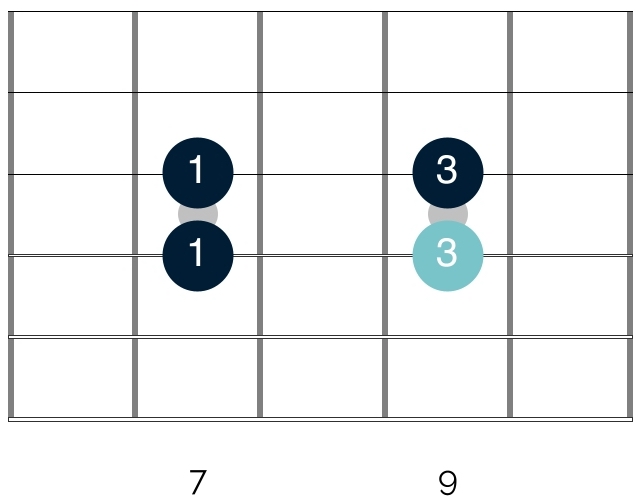In my opinion, one of the biggest challenges to creating effective blues solos, is learning blues phrasing.
Phrasing is a highly nuanced technique and one that takes time and a lot of practice to develop. However it is really worth the effort. It will transform your solos and improvisations from sounding like a series of licks and phrases stacked on top of each other, into sounding like properly constructed and impactful solos.
Developing your phrasing is an important skill to learn as a guitarist, regardless of the genre of music you play. But I would argue that it is essential if you want to develop as a blues guitarist.
The blues is all about nuance and feel. It is not about how many different scales or notes you can play.
The majority of famous blues guitar solos are constructed using nothing more than the minor pentatonic and minor blues scale.
And many of the most notable blues guitarists of all time – Albert King, Freddie King and Stevie Ray Vaughan (amongst countless others) – had what could be considered a more ‘limited’ musical vocabulary.

A large part of what makes their playing so effective is their phrasing. The way they stack phrases together and construct licks not only makes their playing more impactful; it also allows them to get more ‘mileage’ out of their phrases.
This ensures that their playing never sounds repetitive or boring. And this is the case, even though they predominantly played using the minor pentatonic and minor blues scales.
In this article then, I will be looking at how you can improve your phrasing. Here are 2 exercises that I use personally and with my students, which will help you to improve your phrasing. So without further ado, let’s get into it!
Exercise I
As noted in the video, I am playing in the key of A, and targeting the following notes from the first shape of the minor pentatonic scale:

The note highlighted above in light blue is the tonic note of A. When you are practicing and playing in the key of A, this note acts like the tonal home base.
There is no tension when you play this note. It creates a moment of perfect consonance and sounds totally resolved. As such it is a great note to target as a way of finishing your phrases.
If you do practice this exercise in A, then some great backing tracks to practice and improvise over are as follows:
Each of these tracks has a different tempo and feel. And as such, each one will bring out a slightly different element in your playing.
You can easily apply this exercise to different keys. In the key of B for example, you would take the following 4 notes:

This is just one example, but you can extend it to any area of the fretboard that you want. All you need to do is find where the first shape of the minor pentatonic scale is in any given key, and then pick out the 4 notes from that first scale shape.
Exercise II
As noted in the clip, I took and adapted this exercise from Gary Moore. Around the 2.40 mark of this video, Moore talks about phrasing and how crucial it is in the blues. He then illustrates just how much mileage you can get out of simple licks by making small adjustments to your phrasing.
Start this exercise by taking some of your ‘go-to’ phrases and then trying to re-work them by altering your phrasing. Do this with all of your most used phrases, and you will quickly freshen up and breathe life into your favourite licks.
How to practice these phrasing exercises
The amount of time that you can dedicate to these exercises will of course depend on your current practice routine.
If you are able to put aside half an hour or more every time you practice, then I would recommend carving out 10 minutes to run through these phrasing exercises.
Put them at the start of your routine. This will ensure that you pay attention to your phrasing and the nuance of your playing. It will put you in the right mindset at the beginning of your session. And there is then a much greater likelihood that you will continue to play and practice with that mindset.

If you are short on practice time, then I would prioritise the first exercise outlined here. In my opinion, this offers ‘more bang for your buck’ compared with the second exercise. You can use it as a warm up for 5 minutes, before continuing with the rest of your routine.
I would then recommend playing the second exercise intermittently. When you start to feel that your phrasing is becoming a little stale and repetitive, add this into your routine for a week or so.
It will help you to come up with a range of new ideas. And this in turn will get you out of your playing rut, and make your improvisations sound fresh and exciting again.
Good luck with whichever approach you take. Let me know how you get on, and if you have any questions at all that I can help with, please do send them over. You can post them below, or reach me on aidan@happybluesman.com. I am always around and happy to help!





Responses
Thanks HBM!!! This is really helping get out of the da da da rut i was in!!
You’re very welcome Dan – I’m so glad to hear that you found it helpful 😁 If there’s anything else I can help with when it comes to phrasing or constructing a solo, just let me know. You can reach me on aidan@happybluesman.com and I am always around and happy to help!
This has really helped me. From personal experience sometimes I try to play to many notes. When you are just learning I think you think more is better . That’s why I picked Blues guitar to learn . It’s not how fast you play are how many notes you play . It’s the the right notes at the right time with lots emotion and feeling.
Again , this is only my experience. I listen to guys I like Stevie Ray Vaughn and Roy Buchanan . Those guys play super charged Blues that is usually lots of notes and fast. Naturally I listen to that and what to play that way . I’ve been listing to BB a lot lately . His note selection and the way he let the notes breathe was excellent.
The thill is gone opening solo is next on my list to learn . He only uses a handful of notes and its moderately slow blues. The song is a master piece to me.
Speaking of SRV one of my favorite songs of his is Tin Pan Alley. He really slows it down and pours a ton a feeling in a few notes. He will play loud and then quiet ect.
Thank you for doing this . Your opening playing was only 4 notes but very soulful.
Thank you so much for taking the time to comment Earl, I really appreciate it. Thank you also for sharing your thoughts, which I think are absolutely right. It is so easy to fall into the trap of just playing a lot of notes. But if you can take a step back from that, give the notes a bit of space and let them ‘breathe’ then it almost always leads to a better and more musical solo.
It sounds like you’re on the right path though, and taking inspiration from all of the greats. Keep up the great work, and I really look forward to our lesson and to hearing your solos in action next week! 😁
Hello, although I’ve played guitar (rhythm guitar) in the past, these days I am playing lead guitar parts on semi acoustic and on a fully electric solid body ukulele. My solid body electric ukulele is a Flight Centurion linear strung low G Tenor tuned open strings A, E, C, G, which is the a guitar’s 5th fret of the E, B, G, D strings. This exercise is quite useful to my “Electric Lead Ukulele Players” Facebook Group as some of us have the music theory, some read tab, some music notation, some read none of it and do everything by trail and error by ear. I read both music notation and tab for uke and guitar, know 80% of the music theory, am a song writer and play lead ukulele in 1 of 3 of my church’s praise team bands as well as sing and play flute. I want to tell you that even though this exercise of yours was made for guitar players, it translates well for those of us who play lead on our ukuleles too. I posted your article in my “Electric Lead Ukulele Players” FB Group.
Hi Brigitte, I am very glad to hear that you found this exercise helpful and thank you so much for sharing it in your Facebook group, I really appreciate it 😁